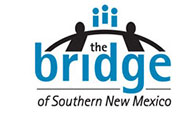Albuquerque Journal Opinion Column: Dual credit courses benefit students, NM economy
by Wanda Mattiace And Michael Morehead / The Bridge Of Southern New Mexico, Las Cruces
Legislative committees recently debated whether dual-credit courses – college-level classes taken by high school students – are worthy of public investment. Do they provide a return on investment of those state dollars?
Yes, for New Mexico’s families, and yes, for the state.
However, New Mexico’s higher education system is bearing the cost burden for dual credit at an estimated loss between $5 million and $7 million annually. This is simply unsustainable. We must close this funding gap, because we can prove valuable returns on this investment.
For every $1 invested by the state, New Mexico’s families would receive a whopping $13 return for a four-year degree and $6 for career certifications or two-year degrees through reduced student loan debt and one to two years of additional income. The recent Legislative Finance Committee report indicates that dual-credit students can graduate college two years earlier than non-dual-credit students, saving students and families $5,000 to $15,000 annually.
Even using conservative calculations, dual credit returns between $1.12 and $1.28 for every $1 to the state when students earn four-year degrees, and around 71 cents for two-year degrees. Dual-credit students need fewer remedial courses, which saves money, while graduates who enter the workforce faster add one to two years to their lifetime income, generating additional personal income and taxes for the state.
However, we are missing the proverbial forest for the trees. This is not only about investing in education. It’s about economic growth.
The state’s future rides on growing qualified middle-skilled workers, who comprise 60 percent of the state’s workforce needs. Moving New Mexico forward demands middle-skill degrees to fill the growing workforce gaps handicapping our economy.
Robert Kaplan, president and CEO of the Federal Reserve Bank of Dallas, recently discussed the critical need to close this pernicious skills gap. Those with only a high school diploma face a declining workforce participation rate and are more likely to be unemployed. Skilled workers, especially those with middle skills, are more employable and earn more.
Applying what works – and can be proven – about early college access will equip far more high school students with the post-secondary credentials they need to not just engage in, but build, our state economy. Future middle- and higher-skilled workers will drive up state incomes and eliminate barriers confronting unemployed and low-skilled workers that keep far too many citizens in the “working poor” and perpetuate generational poverty.
The Bridge of Southern New Mexico has always been a vocal advocate for both dual-credit courses and early college high schools, which propel students toward high school and college completion simultaneously.
How do we know we were right? New Mexico’s historically low graduation rate has hit an all-time high for the state, in direct correlation to the rise in students taking dual-credit courses. Even higher rates will be attained by prioritizing career and technical education pathways that earn career credentials and lead to two-year degrees in high school.
Arrowhead Park Early College High School, a newly designated Blue Ribbon High School of Excellence, offers dual credit to students earlier and in greater numbers, and students graduate at a rate near 100 percent. The model has since been replicated across the state, reaching 2,000 students representative of most New Mexico students – first-generation college attendees, children of color and children from low-income families.
Clearly, more college-level coursework, not less, is demonstrably improving outcomes for students. We must close the funding gap by growing the pot through workforce dollars or increased investment, not by shifting existing public or higher educational dollars back and forth for a zero-sum gain. Investment in dual credit is a win-win-win for families, students and the New Mexico economy.
The clear value and return on investment of this powerful educational tool deserves an intentional approach to support expansion and sustainability. This is more than a clarion call; this is a rare opportunity to propel New Mexico and its families forward.

